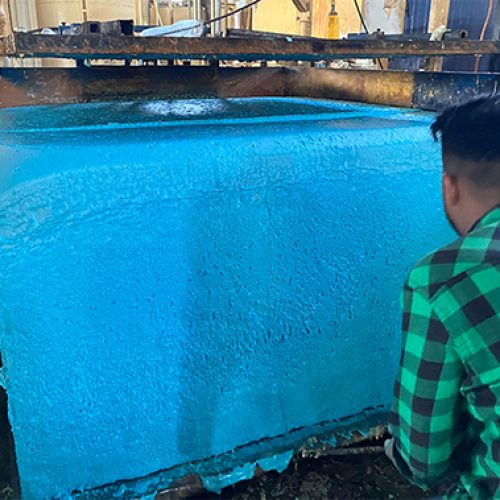The same product may require significantly different formulas depending on the region, raw materials, equipment, and specific conditions. Therefore, any formula provided should only serve as a guideline.
To illustrate this, we will use the standard formulation for ordinary sponge foaming. The reason for using this common formula is:
Ordinary polyether has low reactivity, meaning its reaction with water and TDI is less intense compared to high-resilience or slow-resilience polyethers, which exhibit much stronger reactions with water and TDI.
The reaction rates between ordinary polyether and TDI are similar to those between water and TDI, making it easier to balance these reactions. Hence, the standard sponge formulation effectively demonstrates the underlying reaction principles.
Now, let’s examine tear strength.
Tear strength is influenced by three main factors: 1) Crosslinking reactions; 2) Hard and soft segments; 3) Internal foam heat.
Crosslinking reactions: The stronger the crosslinking reaction, the higher the tear strength.
Hard segments: A higher proportion of hard segments leads to greater tear strength.
Internal foam heat: This factor governs both crosslinking reactions and the formation of hard segments. An increase in internal heat enhances crosslinking and hard segment formation, thus improving tear strength.
It is important to note that crosslinking reactions are not controlled by amines or tin but are instead regulated by the internal foam heat.
Formula Analysis
Let’s first compare Formula 1 to the original formula. The main difference lies in the TDI content: Formula 1 contains one more part of TDI, resulting in a higher TDI index. The crosslinking reaction is closely tied to the TDI index; a higher TDI index accelerates and strengthens the crosslinking process. Therefore, the tear strength of Formula 1 surpasses that of the original formula.
Next, consider Formula 2, which increases the water content while reducing methane content. Since the reaction between water and TDI releases heat and methane absorbs heat, this adjustment raises the internal foam temperature. The increase in internal heat further enhances crosslinking and hard segment formation, resulting in significantly improved tear strength compared to the original formula. This highlights a key method for adjusting tear strength.
Finally, look at Formula 3. In this case, the A33 content is increased. A33 catalyzes the reaction between water and TDI, leading to a rise in internal heat. Consequently, the tear strength of Formula 3 also exceeds that of the original formula.
Additional Observations
Both the substances produced by crosslinking and those generated during hardening are influenced by internal foam heat. These substances not only enhance tear strength but also improve the foam’s thermal stability. For example, the British thermal weight loss test reflects thermal stability. In other words, the thermal stability of Formulas 1, 2, and 3 is superior to that of the original formula.

